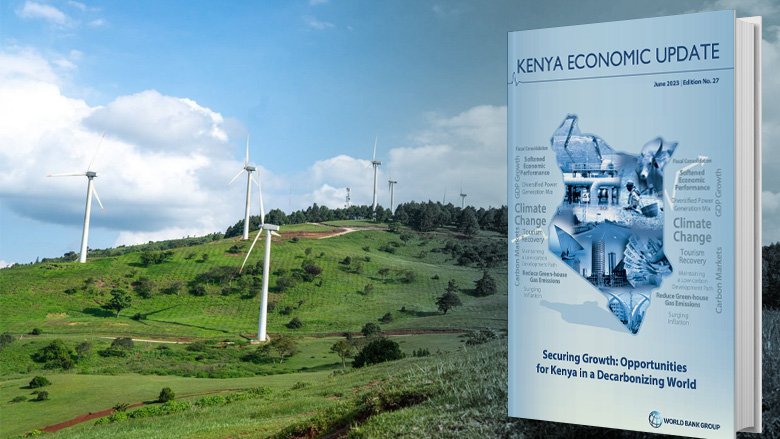To maintain the low-carbon growth path, the report recommends key interventions to scale up renewable energy, green the transport sector, and expand engagement in carbon markets, including:
Sustain clean energy generation
Kenya has achieved remarkable success in developing a well-diversified power generation mix and could achieve a fully green grid by 2030. The report shows that the country has a unique opportunity to stay on a low-carbon growth path while meeting its on-grid electricity needs entirely from green energy sources.
Reduce the energy intensity of vehicles and shift freight to lower-carbon transport modes
The report highlights the emission reduction and productivity benefits of measures outlined under the National Climate Change Action Plan (NCCAP), including shifting containerized freight from road to rail, electrifying the Mombasa-Nairobi Standard Gauge Railway (SGR), adopting low-carbon technologies in aviation and maritime sectors, implementing the Bus Rapid Transit system in the Nairobi metropolitan area, and conducting pilot projects on electric vehicles that can help reduce emissions.
Replace fossil fuels with alternative, sustainable energy sources
Fully eliminating GHG emissions from transport and logistics in Kenya, the report notes, would require large-scale conversions to green fuels. The country should also explore various alternatives (including green hydrogen) for reducing fossil fuel consumption.
Increase the energy efficiency of vehicles and logistics
Kenya could establish national standards to limit fuel consumption in new heavy-duty vehicles with diesel and gasoline engines. Fuel efficiency standards could be set during truck licensing, accompanied by a voluntary program to retire and replace the least fuel-efficient vehicles. The quality of the road infrastructure should also be addressed given its impact on average fuel consumption per distance traveled.
Optimize logistics through digital platforms
The report says that implementation of Smart Logistics concepts can optimize resource consumption, enhance efficiency, and contribute to sustainability and climate protection. Additionally, measures could be taken to regulate the use of digital platforms in the passenger segment, which includes ride-hailing and combined passenger transportation and delivery services.
Change supply chain strategy and management
The analysis observes that there are significant opportunities to improve environmental sustainability further by developing footprint models and revisiting the location of production, warehouses, and distribution centers as well as transportation routes/modes. This may involve establishing private sector-led Inland Container Depots or dry ports along transportation routes, facilitating connections between industries with bulk transport needs and specialized terminals.
Shift to greener and reliable urban mobility solutions
The report sees the development of mass rapid transit system as a game changer for Kenya. Low-carbon urban mobility solutions should prioritize developing an integrated and reliable multi-modal public transport system with adequate non-motorized transport facilities (such as sidewalks, bike lanes) for first/last mile connectivity, and shifting from a car-centric to people-centric approach. This will help boost the productivity of working women and men. Complementary efforts to promote e-mobility could augment the benefits from the proposed shifts.
Improve engagement in carbon markets
Capitalizing on carbon markets will require the Kenyan government to finalize the formulation of a robust legal framework to provide the necessary legal basis for carbon markets and to operationalize the legislation. The country should align with this legal framework, its strategy for determining the conditions under which it would opt to participate in compliance carbon markets and the operational issues. Kenya should also put in place a comprehensive and robust measurement, reporting, and verification system. Kenya has the potential to restore 5.2M ha through forest landscape restoration, which could generate a notable amount of carbon credits and attract buyers if the quality and environmental integrity of the credits can be demonstrated. Expansion to renewable energy can also be a source of carbon credits. Kenya could also explore carbon credit opportunities in nascent sectors, including construction and e-mobility.
